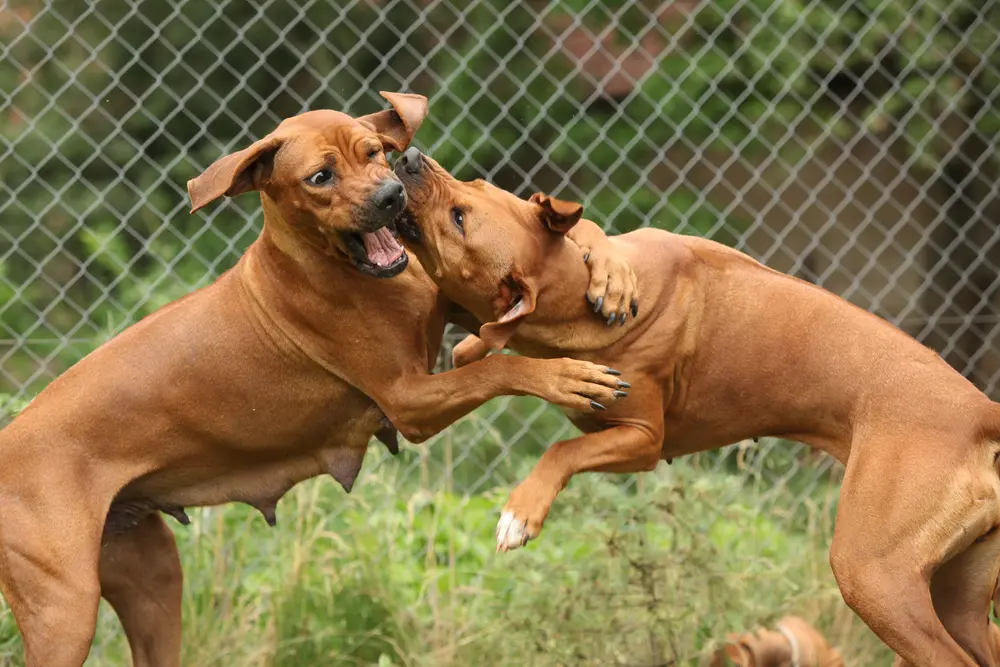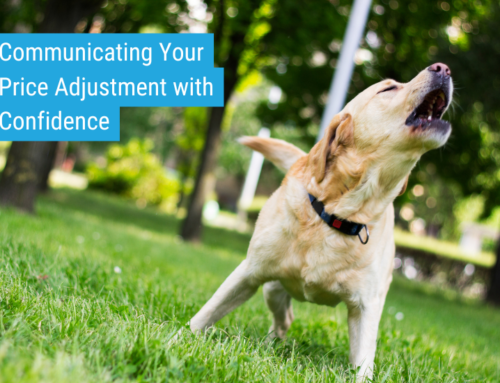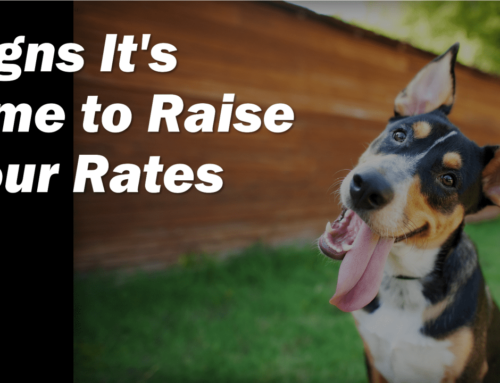Minimizing Bites and Fights in Off-Leash Play

Fights and bites in off-leash dog play. It’s one of the biggest fears for anyone in the pet industry. On the one hand some say minor injuries are as common a scraped knee when children play on a playground. On the other hand, there are an alarming number of punctures and even deaths during off-leash play. Keep reading to learn how to minimize injuries, how to classify dog fight/bite incidents, and how to assess an incident after it occurs.
One of the main goals of The Dog Gurus is to reduce the risk of injury in off-leash play by helping everyone raise the bar of safety in their playgroups. The first step to minimizing injuries to dogs and people is to establish a safe environment. The following safety factors should be considered in any off-leash play area:
- Space – A good recommendation that provides dogs with enough space without overcrowding, is 75-100 square feet of play space per dog. If you have a small dog area (dogs under 25lbs) you may be able to get away with 40 square feet per dog. Overcrowding can result in more frequent incidents between dogs because they don’t have enough room to get away from other dogs when needed. (Just as people can get grumpy in a crowded concert hall).
- Supervision – To provide the safest supervision to the dogs playing, always have someone physically in the same room with the dogs. This staff member should be properly trained in understanding canine body language and in the use of humane, management techniques for handling the dogs. Watching only through tv cameras or windows will not provide staff with enough time to best control and manage the dogs while playing to prevent escalations.
- Staffing – A safe staffing ratio is one person for every 10-15 dogs, depending on the size of the dogs and the experience of the staff. Having an inexperienced staff person handling dogs puts both the dogs and people at risk. However, even an experienced person will have trouble managing over 15 dogs in the event of a fight.
Next, you’ll want to have a common language that everyone can use to talk about dog incidents. Dog behavior is on a continuum and you need a way to classify the continuum in terms of dog fights/bites. You don’t want to call everything a dog fight, regardless of the level of intensity. At the same time, you also don’t want to refer to incidents with such vague terminology that no one knows what you mean. For instance, saying two dogs “got into it” doesn’t really help to explain what happened.
So what terms should you use? There are four common terms introduced in Off-Leash Dog Play, that we reexamine here. These provide a good foundation to discuss the various types of incidents that might happen.
- Snark: a big aggressive display that usually includes strong vocalizations from one dog to another when the receiving dog does not vocalize or fight back.
- Tiff: an aggressive sounding moment between two dogs in which both dogs vocalize but there is no contact
- Scuffle: a very brief (less than 10 seconds) aggressive interaction between two or more dogs that includes body movements and not just vocalizations.
- Fight: An incident between two or more dogs over status or control of some resource that lasts longer than 10 seconds and includes body contact and possibly vocalizations. May or may not result in injuries.
Whatever terms you use, be sure everyone understands the meaning so you share a common language when talking about the incidents in your playgroups. This will give you a leg up on assessing any incident that might occur.







